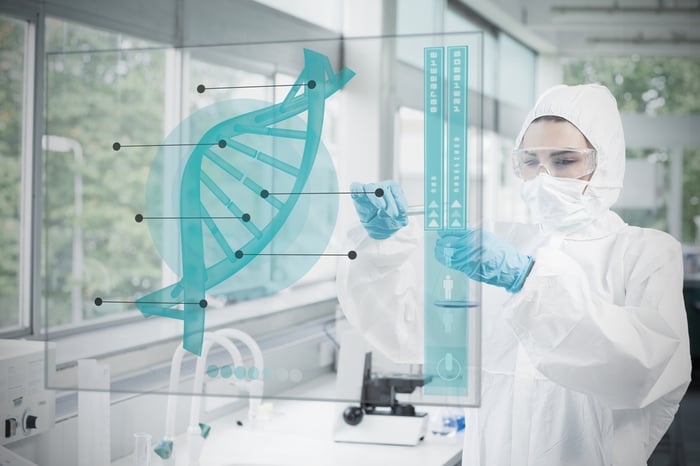How Rapid Prototyping Accelerates Life Sciences and Healthcare

As I start to explore the landscape that has been shaped by scientific knowledge and technological advancements, it becomes clearer to me that innovation holds the key to transformative breakthroughs and rapid prototyping in life sciences will be essential. From medical devices to artificial intelligence, the sector is undergoing a revolution that promises improved diagnosis, more effective treatments, and an overall enhancement of human well-being.
I believe that in the era of technological transformation, the industry is experiencing a shift that makes innovation not just desirable but a necessity. The World Health Organization Health Innovation Group supports this by emphasizing that innovation responds to unmet public health needs, enhancing efficiency, effectiveness, and affordability in healthcare.
The importance of innovation in life sciences and healthcare is also supported by Rob Davis, CEO of Merck, as he believes that “customer satisfaction is directly tied to the innovation we bring and the benefit we can deliver for patients.”
Olympus, another key player in the healthcare industry, notes that as disruptive technologies revolutionize patient care and therefore healthcare organizations face the pressing need to innovate. Factors such as an aging population, increased long-term conditions, reduced funding, heightened patient expectations, and the global impact of the COVID-19 pandemic intensify the challenge. Shortages in skilled staff availability further stress the importance of innovation in healthcare.
Digital acceleration: A driving force behind innovation
Innovation is now bigger than ever within the life science and healthcare industry, especially if we consider the ongoing digital acceleration the sector is experiencing.
As Dr. Markus Kamieth, CEO of BASF, explained “I am energized by the topics of growth, innovation, and customer focus. Currently, I am fascinated by how digitization of all of these areas at the same time both enriches as well as accelerates them.” The way I see it, it’s important to note how innovation is both enriched and accelerated by digitization, making it necessary to remain ahead of the curve.
However, I must mention that innovation in the life science and healthcare industry is not as simple as we wish it to be. When I think about the major challenges that arise with innovation in the sector, the cost of development and the time-intensive nature of innovating are a few that pose significant barriers, particularly for smaller companies and research groups.
These challenges are echoed by Deskera, highlighting the high cost of development in life science innovation. These make it challenging for smaller entities and research groups to enter this innovative field. Moreover, the time required for the development of the innovation itself is a substantial hurdle. Life sciences are also highly regulated, demanding rigorous testing and review processes to ensure safety and efficacy.

As quoted by the CEO of Bayer, Bill Anderson, “In large companies the people who are making the decisions are often not the people who have the level of closeness to the decision that you would desire.” Therefore, his approach has been to help scientists and team leaders “drive medical innovation, to thrill customers and to make good use of company resources” by responsibly spending corporate resources. Which makes me think, since innovation in life sciences and healthcare is imperative, what’s the best way to allocate these resources responsibly?
On the other hand, when looking at healthcare startups, as noted by Accept Mission, they face more adversity in attracting venture capital compared to other industries. This funding disparity complicates the procurement of resources needed to bring new healthcare products to the market. The National Library of Medicine adds that another big challenge in the sector is the difficulty of accepting failure as part of the innovation process.
The way I see it, overcoming these challenges requires strategic approaches and this is where rapid prototyping comes into play.
The lean methodology: A strategic approach to innovation
When I discuss innovation with people, the lean methodology is a theme that seems paramount to bring up. By integrating prototyping and Minimum Viable Products (MVPs) in a structured process, the lean startup methodology can transform business ideas into concrete propositions. Prototyping, in particular, plays a crucial role in testing basic concepts and potential visual experiences before significant resources are invested.
A prototype, as a simple demonstration of a final product, serves to test the product on its target audience and gain valuable feedback for improvement. Prototypes are also used as a foundation for MVP designs, which allow for testing hypotheses before full-scale development. While most prototypes fail, the information gained from user feedback guides developers in refining the innovation, with less significant financial burden and allows them to save valuable time compared to full-scale product development.
The lesson of prototyping, according to Eric Ries, author of The Lean Startup, is that any additional work beyond what is required to start learning is a waste.
Rapid prototyping: Accelerating innovation in life sciences & healthcare
prototyping brings numerous benefits, from improved patient outcomes to reduced healthcare costs and faster product development cycles. Real-world use cases, such as 3D-printed prosthetic hands and "smart pills," exemplify how prototyping has already contributed to innovation in medical technology.
Consonance notes that by building prototypes you can provide a visual representation of the desired end product, facilitating communication between design and engineering teams. The flexibility in the prototyping process allows for variations in complexity based on expertise. Rapid prototyping not only streamlines the product development process but also aids in identifying and correcting design flaws quickly.
Some of the added benefits of rapid prototyping in healthcare and life sciences include:
- Improved patient outcomes: Rapid prototyping enables the creation of highly customized medical devices and implants tailored to individual patients’ specific needs, improving outcomes.
- Reduced healthcare costs: By streamlining the product development process, healthcare providers can identify and correct design flaws quickly, reducing the need for costly redesigns and retooling.
- Faster product development cycles: Rapid prototyping accelerates the identification of design flaws and facilitates quicker improvements, significantly reducing time-to-market for new medical devices and equipment.
- Increased efficiency in healthcare processes: Prototyping aids in the development of new medical apps and software, streamlining processes such as patient monitoring and data management.
I felt the need to highlight also some real-world use cases that have successfully benefited from using rapid prototyping:
- Microbial Reactor: The challenge of developing an open-source platform for fundamental microbial science led to the creation of a microbial reactor. The use of open-source files and readily available source components facilitated local implementation in underdeveloped nations, showcasing the versatility of prototyping.
- Open Bionics: Open Bionics, a UK-based company, developed a 3D-printed prosthetic hand that is more affordable and accessible than traditional prosthetics. Prototyping allowed them to test and refine functionality and user experience, ensuring safety and effectiveness for individuals with limb differences.
- Proteus Digital Health: Proteus Digital Health developed a prototype of a "smart pill," an ingestible device with sensors and electronics to track and transmit data about a patient’s health. Prototyping enabled the refinement of design and functionality, ensuring safety and efficacy.
NeuroNest: Our experience of prototyping in life science and healthcare
To show how I practiced what I preach, let's explore a real-world example involving Netguru. This innovative project emphasized the successful use of rapid prototyping in the life science and healthcare sector, showcasing the transformative impact it can have on a new product.
At Netguru we decided to have a closer look at Alzheimer's patient care. The project involved creating an interconnected platform designed for patients, caregivers, and clinics. We called this prototype NeuroNest - our concept for the Alzheimer's Patient Management App and our first RnD project in the Digital Therapeutics space.
While we’re not experts in this sensitive topic,
we believe that with our tech skills, we could be able to make health systems more efficient and sustainable.
NeuroNest showcases a collaborative effort between healthcare professionals and technology experts, leveraging rapid prototyping to speed up the process of innovation. The project integrated artificial intelligence, wearable technology, and data analytics to create a seamless and efficient healthcare experience. By rapidly prototyping different components, the development team was able to test and iterate on various features before finalizing the product.
The future of life science and healthcare innovation
As I reflect on life science and healthcare innovation, the key takeaway is clear: the future demands innovation from these sectors and to succeed we need to apply rapid prototyping in life sciences and healthcare as a strategy. There’s no other way to go about it, prototyping is the catalyst for accelerated innovation in the healthcare sector.
Innovation must be driven by a clear vision of addressing real-world problems. It needs to be sustainable, scalable, and accessible to diverse populations. The use of digital tools and technologies, combined with strategic approaches like rapid prototyping, can pave the way for transformative breakthroughs in the industry.
In the words of Eric Ries, "The only way to win is to learn faster than anyone else." As we embrace the future in life sciences and healthcare, let's continue learning, adapting, and driving positive innovations in the pursuit of better patient care and a healthier world.







